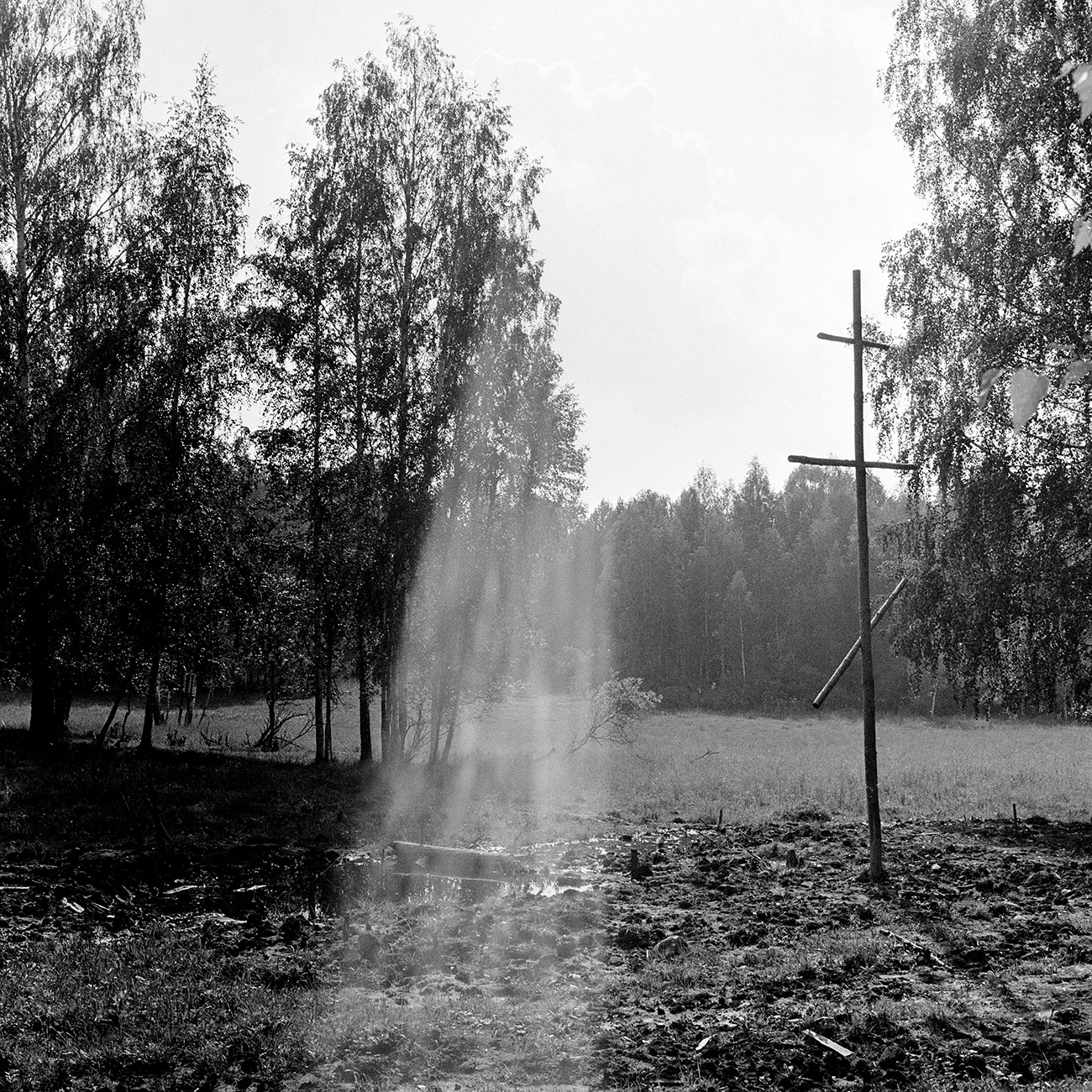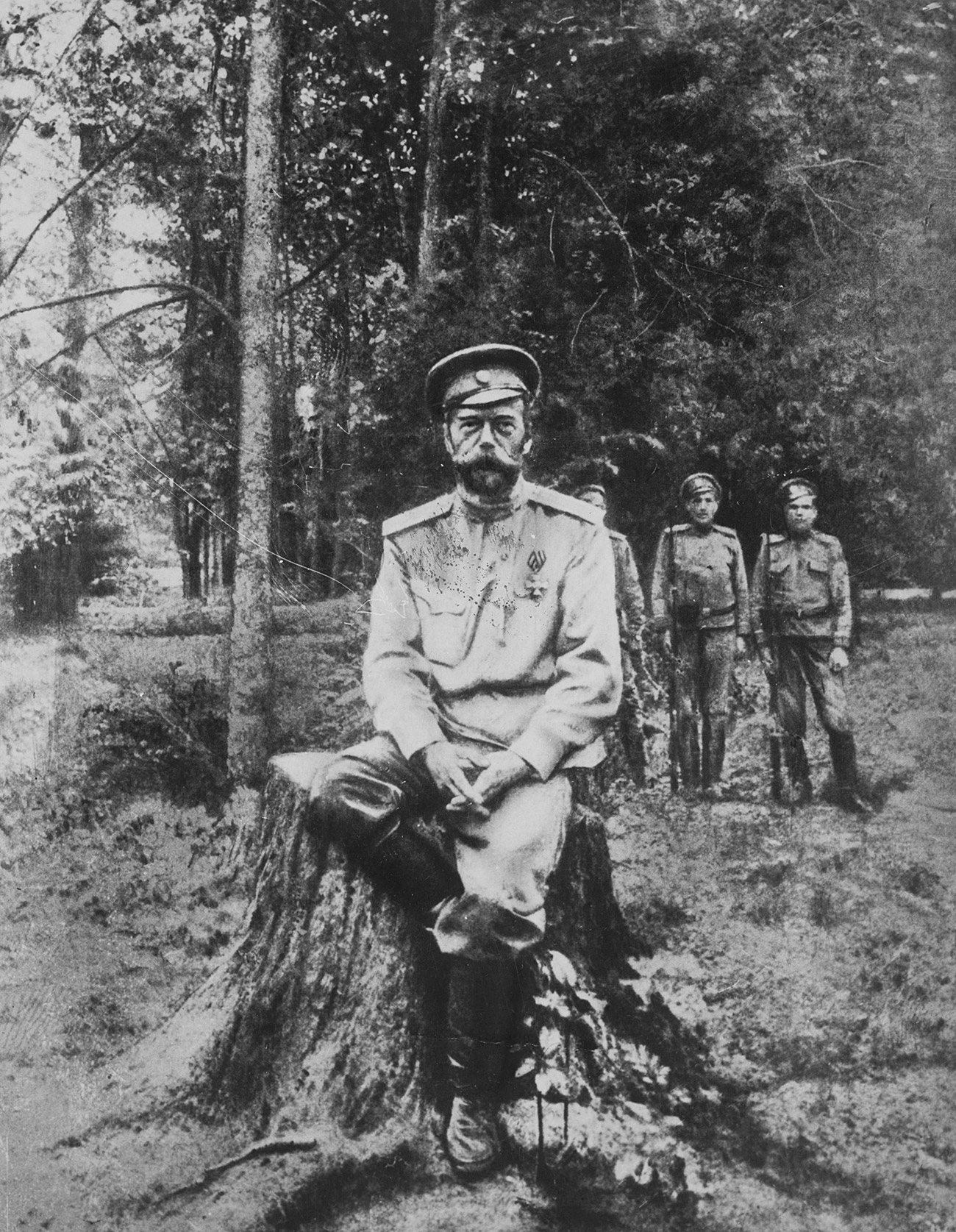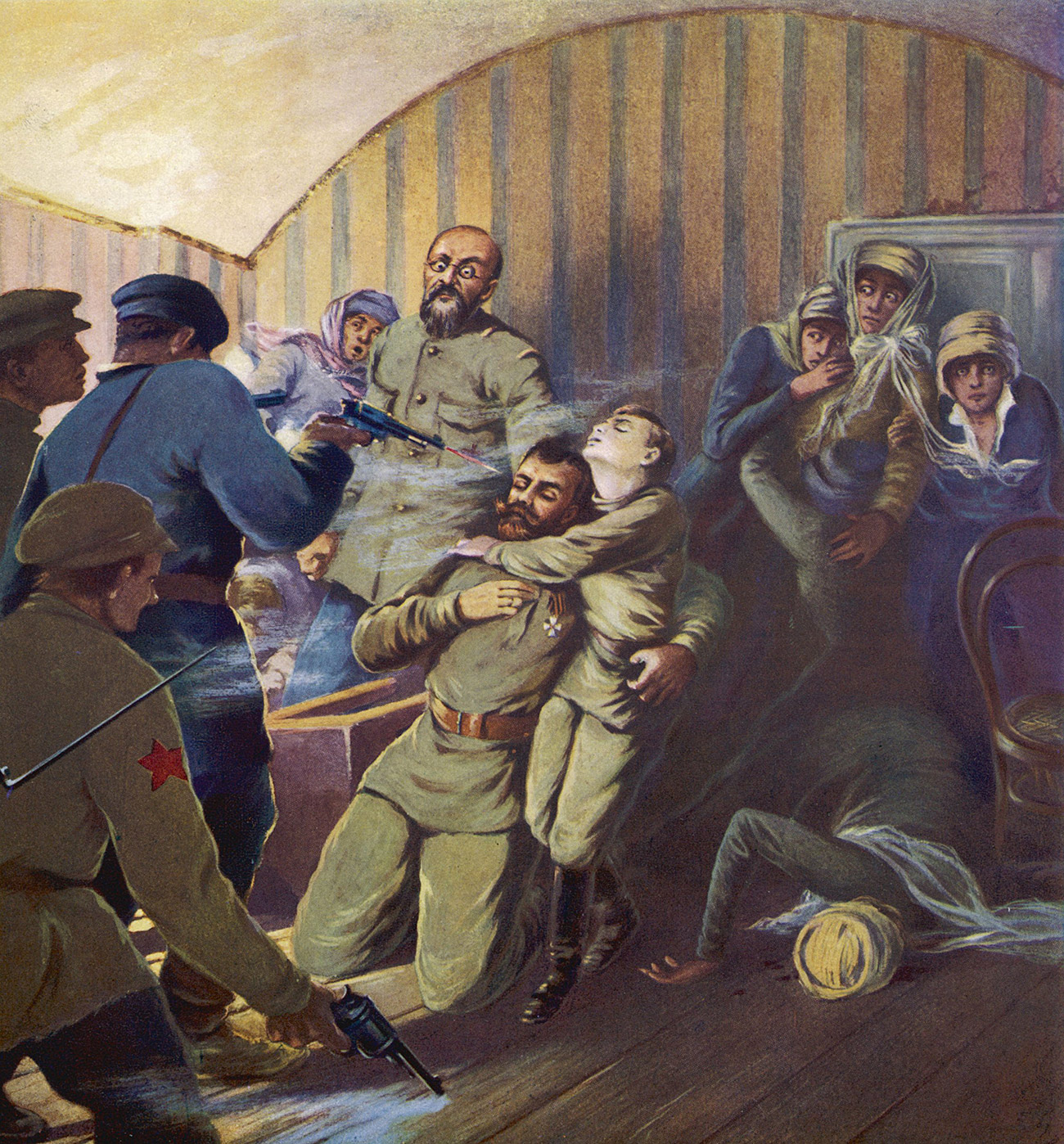10 important facts about the murder of Russia’s royal family

Tsar Nicholas II with daughters (L-2nd R) Maria Romanov, Anastasia Romanov, Olga Romanov, Tatiana Romanov. The series of the unique pictures were taken by the Tsar Nicholas II himself or people close to the royal family.
Getty ImagesThis article was updated on February 27, 2023, to include new information on the matter. You can also read our detailed article ‘How Nicholas II and his family were murdered’ to learn about other details of this horrendous event.
1. Criminal investigation into the imperial family’s murder still continues
 Yekaterinburg. Place, where the remains of Tsar's family were found, 1992 / Anatoly Semyokhin/TASS
Yekaterinburg. Place, where the remains of Tsar's family were found, 1992 / Anatoly Semyokhin/TASS
The case was reopened in 2015 by request of the Russian Orthodox Church, which wanted to confirm the identity of the remains considered to be that of the imperial family. In 2000, they were canonized as martyrs of the faith.
The remains of Nicholas II, his wife Alexandra, three of their children and their servants were discovered in 1991 outside the city of Yekaterinburg, where they were executed on July 17, 1918. The remains of Crown Prince Alexei and Grand Duchess Maria weren’t found until 2007.
UPDATE: In 2007, not far away from Porosyonkov Log, where the remains of Nicholas II and his family were found, another discovery was made. Fragmented bones of probably two young humans, just about 170 grams in total, were discovered. In 2008, a joint investigation led by the U.S. and Russia confirmed that these bone fragments belong to Tsarevich Alexey and Grand Duchess Maria Nikolaevna.
2. The investigation involved Queen Elizabeth’s husband
 Elizabeth II greets St. Petersburg residents on Palace Square during
Elizabeth II greets St. Petersburg residents on Palace Square during
Despite the doubts of the Orthodox Church, the identity of the remains was confirmed through a series of tests conducted in the early 1990s in Russia and abroad. According to the criminal investigator in charge of the case, Vladimir Solovyov, one of the tests involved taking a blood sample from the husband of Queen Elizabeth II, the Duke of Edinburgh, who is a direct descendant of Empress Alexandra.
UPDATE: In 2018, Dr. Peter Gill, a British forensic expert and Professor of Forensic genetics at Oslo University, published a blog post on the investigation of Prince Philip’s DNA. “We were fortunate to obtain blood samples from HRH Prince Philip, Duke of Edinburgh, who is a direct descendant of Tsarina Alexandra. Samples were also obtained from the Duke of Fife and Princess Xenia Cheremeteff Sfiri, who are related to the tsar. The remains matched their living royal relatives and we, therefore, knew we had found the bones of the Romanovs,” Gill wrote.
READ MORE: Russian roots of Prince Philip
3. Tsarevich Alexei and Grand Duchess Maria Nikolaevna have not been buried
 Military men carrying the coffin with remains of Emperor Nicholas II at the burial of remains of him, his family members and servants in the St.Peter and Paul Cathedral / Igor Mikhalev/RIA Novosti
Military men carrying the coffin with remains of Emperor Nicholas II at the burial of remains of him, his family members and servants in the St.Peter and Paul Cathedral / Igor Mikhalev/RIA Novosti
The remains of Nicolas II, Alexandra and their three daughters were given a state funeral in July 1998 and buried at the Peter and Paul Fortress in St. Petersburg, uniting them with the rest of their family. While President Boris Yeltsin attended the ceremony, Patriarch Alexei II refused to attend.
The remains were exhumed in 2015, in order to take DNA samples as part of the new investigation. In October 2016, Patriarch Kirill said the tests would soon be completed. To this day, the remains of Crown Prince Alexei and his sister Maria have not been buried and are held in the Russian State Archive.
UPDATE: As of 2023, the question still remains open. Although the Russian Investigative Committee has confirmed the authenticity of the remains twice, the Russian Orthodox church still refuses to acknowledge and approve this fact. In 2018, after another message from the Investigative Committee, the Russian Orthodox Church stated that the question is in the competence of the Most Holy Synod of Russia. As of 2018, the remains were kept in special caskets in Novospassky Monastery in Moscow, in an ancient Romanov dynasty crypt that dates back to the 15th century.
4. The imperial family fled under the Japanese flag
UPDATE: The following information is strongly debated.
 Grand Duchesses Anastasia Nikolaevna and Tatiana Nikolaevna (L-R), daughters of Tsar Nicholas II, at Tsarskoye Selo / TASS
Grand Duchesses Anastasia Nikolaevna and Tatiana Nikolaevna (L-R), daughters of Tsar Nicholas II, at Tsarskoye Selo / TASS
After abdication in the February Revolution, the imperial family took refuge in their residence at Tsarskoe Selo. When they left in two trains, they allegedly travelled under the Japanese flag as a part of the Japanese mission of the Red Cross to avoid possible lynching by the mob. Later, the family was moved to the Siberian city of Tobolsk, not far from the village that was the birthplace of the infamous Grigory Rasputin, “our dear friend”, as Tsarina Alexandra referred to him. Following the Bolshevik uprising in October, the communist authorities moved the family to Yekaterinburg in the Urals.
5. Official reason for execution was the approach of Bolshevik foes
 Tsar Nicholas II just before he was shot, Yekaterinburg, July 1918 / Global Look Press
Tsar Nicholas II just before he was shot, Yekaterinburg, July 1918 / Global Look Press
In Soviet times, the official version claimed that the imperial family was executed by order of the Ural Regional Soviet authorities, which said the murders were necessary, because Czechoslovakian regiments, formed from World War I prisoners of war, were approaching the city. They had revolted against the Bolsheviks in 1918, but the Soviet government was also concerned about the “counter-revolutionary” conspiracy that allegedly wanted to free the former monarch. No signs of an actual conspiracy were ever found, however, and the Czechs took the city eight days after the imperial family was murdered.
6. Moscow did not authorize the execution
UPDATE: The following information turned out to be misleading. Moscow actually authorized the execution. Read more about it here.
 Group of Ural Bolsheviks at the alleged burial place of the Romanovs / Archive photo
Group of Ural Bolsheviks at the alleged burial place of the Romanovs / Archive photo
In post-Soviet Russia, investigators concluded that the execution was carried out by order of local Ural Soviet authorities. There is no evidence that Vladimir Lenin or other Bolshevik leaders wanted to execute the tsar and his family. Some historians even argue that Moscow wanted to put the last tsar on trial.
However, some of the executioners recalled that, on the eve of the shooting, they received a coded telegram from Moscow ordering to kill the tsar, but not the entire family. To execute all the Romanovs in Yekaterinburg was the initiative of the local Soviet government, whose members were much more radical than the Bolsheviks in the Moscow Kremlin.
7. The bodies were buried twice
 The execution of Tsar Nicholas II and his family at Yekaterinburg / Mary Evans Picture Library/Global Look Press
The execution of Tsar Nicholas II and his family at Yekaterinburg / Mary Evans Picture Library/Global Look Press
The Romanovs were taken to the basement of Ipatiev House where they were lined up against a wall and shot by firing squad. Those who survived the first attack (some bullets ricocheted off jewelry hidden in their clothes) were finished off with bayonets. Then the bodies were taken and thrown into a mine. However, to reduce any chance that the remains might be found, the soldiers threw them into an unmarked grave and doused them in acid.
UPDATE: The use of acid during the destruction of the bodies is still debated.
8. Officially the fate of the Royal family was not known
 Room in the Ipatiev House, Yekaterinburg, where the Russian royal family was brutally murdered, 1918 / Mary Evans Picture Library/Global Look Press
Room in the Ipatiev House, Yekaterinburg, where the Russian royal family was brutally murdered, 1918 / Mary Evans Picture Library/Global Look Press
Originally, Soviet authorities only reported the death of Nicholas II. For some time the official position was that the rest of the family had been evacuated from Yekaterinburg and was lost in the chaos of the Russian Civil War. It was not until the early 1920s when details of the execution were revealed, after those involved spoke out.
9. There was not much public interest in the murders
 The Romanovs' on the house roof in Tobolsk where they were kept until the transfer to Yekaterinburg in 1918. / RIA Novosti
The Romanovs' on the house roof in Tobolsk where they were kept until the transfer to Yekaterinburg in 1918. / RIA Novosti
It’s hard to believe now, but, back then, the Russian public was not moved by news of the tsar’s murder. Nicholas II simply was unpopular. Historians say that, after the downfall of the monarchy, authorities received many letters from the public asking for him to be killed. The only protest came from the head of the Orthodox Church, Patriarch Tikhon, who openly condemned the killings.
10. The place of pilgrimage
 Yakov Yurovsky, chief executioner of Tsar Nicholas II and his family, early 20th century. Artist Unknown. / Getty Images
Yakov Yurovsky, chief executioner of Tsar Nicholas II and his family, early 20th century. Artist Unknown. / Getty Images
Yakov Yurovsky, the man in charge of the shooting, claimed that he shot the tsar dead. In 1920, he personally delivered to Moscow jewelry that belonged to the imperial family. Subsequently, he held several important posts in the new Bolshevik state, dying in 1938, not as a result of Stalin’s Great Purge, but due to a stomach ulcer.
Ipatiev House was demolished in 1977, when the regional government was headed by future President Boris Yeltsin. Later, the Church on the Blood was built on the site that’s now a place of pilgrimage.
If using any of Russia Beyond's content, partly or in full, always provide an active hyperlink to the original material.
Subscribe
to our newsletter!
Get the week's best stories straight to your inbox